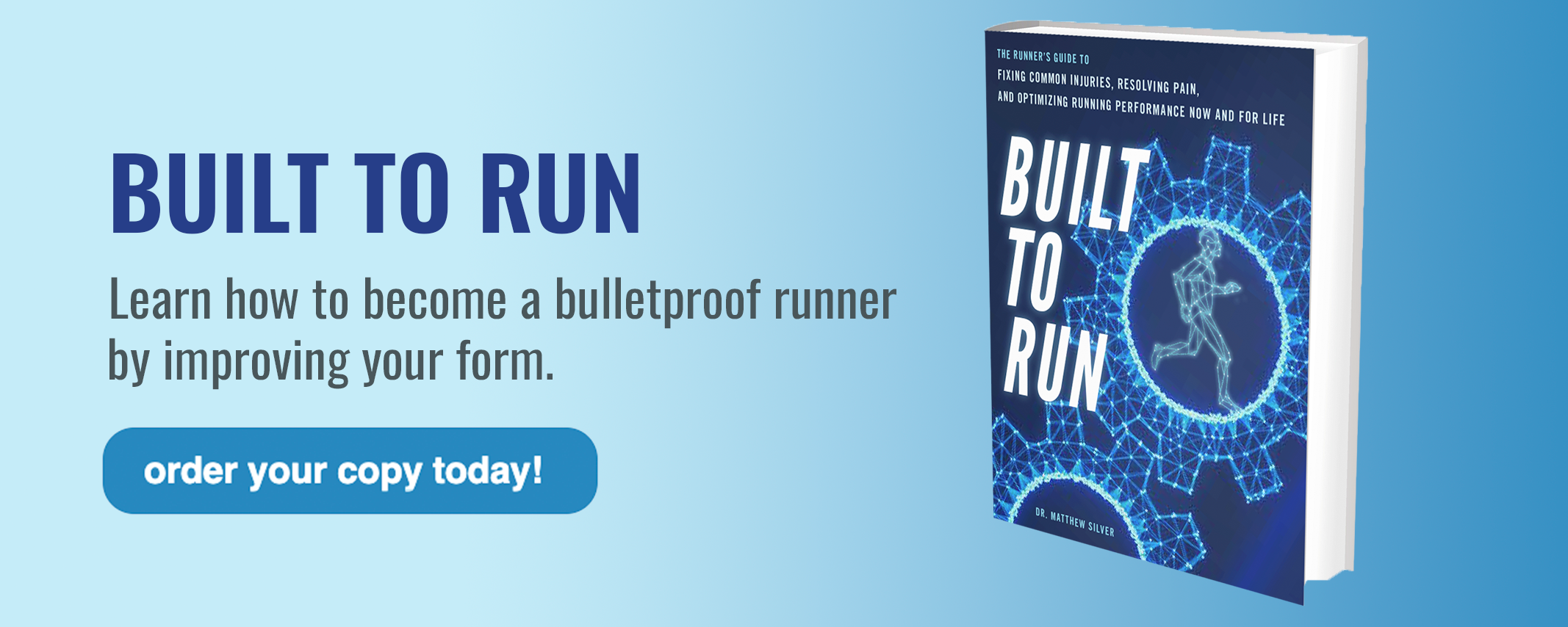3 Critical Signs of Runner's Knee and How to Fix it
Believe it or not, 70% of runners are injured in a given year. That is a crazy statistic! If you are running with a group of friends, that means 70% of you are going to get injured that year. Let’s also not forget the real definition of an injury: being unable to do the thing you love.
That means that 70% of runners will have so much pain that they can’t run and train the way they want to. That is INSANE! Now, you may be thinking to yourself, “surely we have improved upon this statistic, right?” At some point this statistic must have been 80%? 90%?
Unfortunately, we’ve been trending in the wrong direction. Running injuries are sadly becoming more and more common, and we’ve seen an increase in injured runners year over year.
One running injury (major or minor) has a nasty history of causing runner aches, pains, and problems. Enter: Runner’s Knee. Runner’s Knee, also known as chondromalacia (meaning softening of the cartilage) and PatelloFemoral Pain Syndrome (PFPS), is one of the most common running-related injuries. Why is that? Let’s find out!
How do you get Runner’s Knee?
Experienced and novice runners alike are all susceptible to developing Runner’s Knee. A few key signs to look out for include:
Limited mobility in quads and hip flexor muscles
Overall lack of lower body strength
Poor running form
3 Reasons You Have Runner’s Knee Pain
Runner’s Knee can occur for a multitude of different reasons.
1. Lack of Mobility in Your Quads and Hip Flexors
One of which is a lack of mobility in your quads and hip flexors. In particular, a muscle called the Rectus Femoris that originates in your hip and goes all the way down to the knee cap.
If this muscle is tight and overused, the knee cap will have excessive pulling on it and thus can cause Runner’s Knee. It is essential that runners warm up these muscles before every run to allow them to work properly and support your joints. Bonus points to runners who perform cool downs after running, too!
2. Lack of Lower Body Strength Training
Another cause of Runner's Knee is a lack of strength. Strength where? Well…everywhere! The quads in the front need to be strong and the glutes and hamstrings in the back of your knee also need to be strong. Your calves in the back and foot flexors in the front need to be strong.
Too many runners (especially the ones we end up working with) do not spend enough time strength training. The stronger our muscles are, the more capacity we’ll have to handle the loads of running.
3. Adapted a Poor Running Form
Last but not least we have running form. Running is a repeated single leg hop over, and over, and over again while moving forwards. Many runners we work with are landing way too far out in front of their bodies and they end up decelerating and then having to re-accelerate every single step….doesn’t sound very efficient, right?
What’s worse about this is that the quadriceps end up taking a majority of this deceleration force. The quadriceps then yank on the knee….it’s no wonder why so many runners have knee pain!
If we can learn to minimize this deceleration force by improving our running form, improve our strength, and have mobile quadriceps we should be able to finally take care of that pesky runner's knee. Of course, wearing stable and supportive running shoes can always tweak minor issues in the feet and running form.
Can You Still Run With a Runner's Knee?
Research and medical advice is constantly evolving when it comes to Runner’s Knee, or, PFPS. Older research, and some medical professionals today, still conclude that runners should stop running when there is knee pain present.
Newer perspectives suggest that the main root of PFPS is actually pain itself, rather than a physical disturbance to the joints in the knee. Because of this, some clinicians deem it O.K. to continue running when diagnosed with Runner’s Knee.
The main takeaway is that you should slow down the distance and intensity of your runs, and listen to your body when it signals pain. Never do any physical activity that causes undue amounts of stress and pain.
How to Heal Runner’s Knee Pain
Stretches
Here are a few exercises that you can try on your own to help with runner’s knee:
Hamstring stretch: Sit on the floor with your legs straight out in front of you. Reach forward and try to touch your toes. Hold the stretch for 30 seconds and repeat.
Quadriceps stretch: Stand with one foot behind you, and hold onto your ankle with your hand on the same side. Keep your knees together and hold the stretch for 30 seconds. Repeat on the other side.
IT band stretch: Cross your left ankle over your right knee and lean to your left side. Hold the stretch for 30 seconds, then repeat on the other side.
Calf stretch: Stand facing a wall with your hands against it. Step back with one foot and keep your heel on the ground. Bend your front knee and hold the stretch for 30 seconds. Repeat on the other side.
Wondering where to go from here? Many runners that we see are sick and tired of having to deal with and worry about their runner’s knee. They’ve tried exercises on their own, seen other practitioners, and nothing has worked.
Your best option is to speak with a physical therapist that specializes in running injuries and running performance. A specialized running PT can help relieve Runner’s Knee pain and explore recovery options for any other existing injuries.
If this sounds like you and you’d like to solve your knee pain once and for all click the button below and talk with our physical therapists in Frederick, Gaithersburg, and Columbia.


